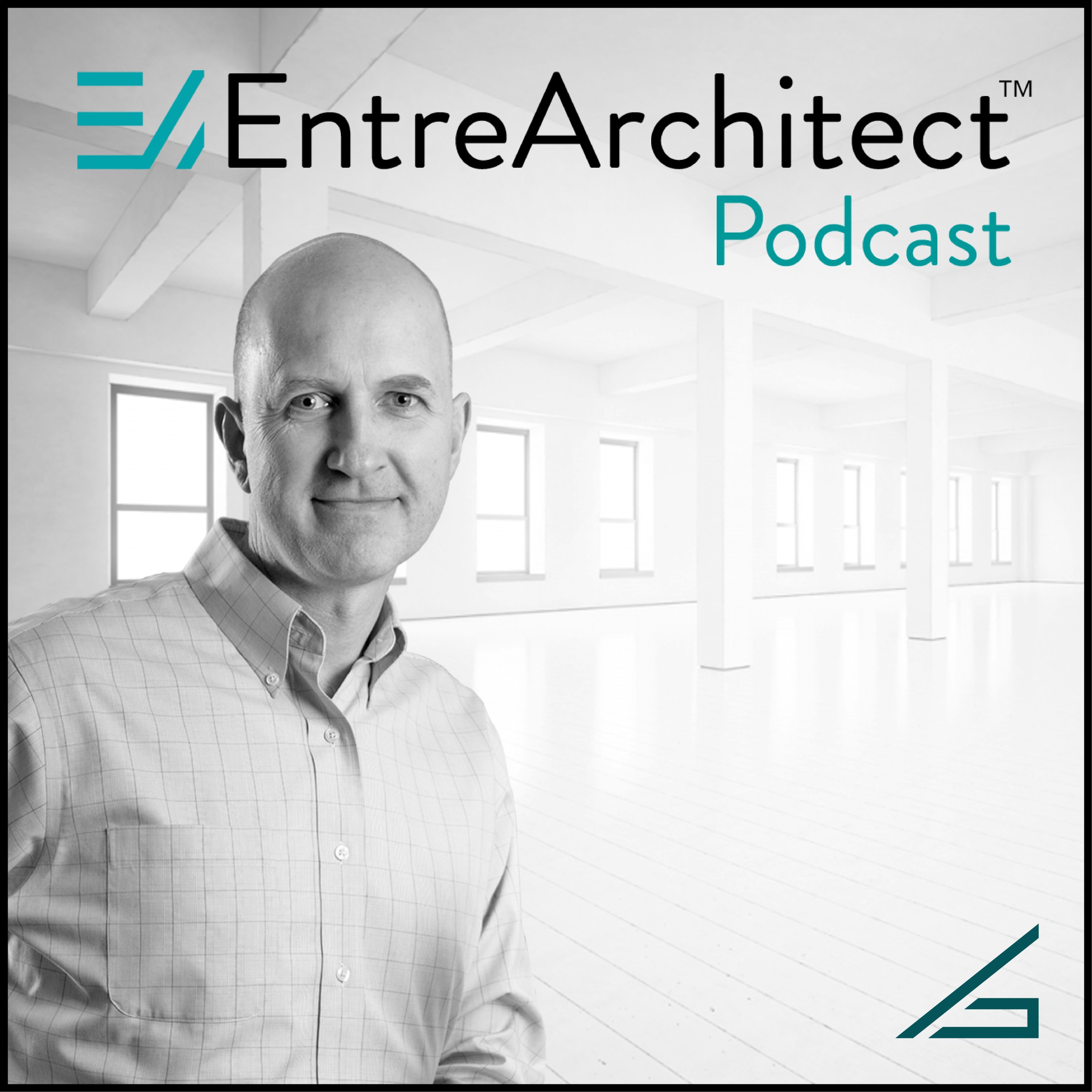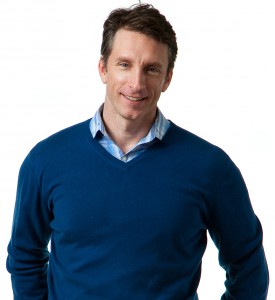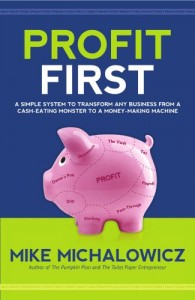
 How to Build a Profitable Architecture Firm
How to Build a Profitable Architecture Firm
Profit… Then Art. In order to be a better architect, we must first be better business people. We need to build better businesses. This week’s guest is the author of Profit First, a book outlining the simple process of transforming any business from a cash-eating monster to a money-making machine. Accounting can be overwhelming and complicated, not to mention difficult to understand. This week, you’ll learn a step-by-step process to guarantee that you’ll be profitable.
This week at EntreArchitect Podcast, How to Build a Profitable Architecture Firm with author Mike Michalowicz.
Mike’s Origin Story
Mike was a Jersey boy all his life who worked at a computer store right out of college. He had a drive to start his own business and quickly realized that managing a business wasn’t as easy as he thought. It took him a few years of trial-by-fire to fall in love with entrepreneurship. He learned that as the solo-guy, you only eat what you kill; the fear kept him going. He sold his first business to a small private equity firm and then started a computer crime investigation company in the right place at the right time.
Although a lot of people face struggles, few people talk about them. After selling his second company, Mike felt he was an expert entrepreneur, he thought he knew all there was to know about running a business. He went on a spending spree and became an angel investor… where he killed every business he invested in. After struggling to pay off his debts slowly, a fire was reignited in him to discover entrepreneurship the right way; he wanted to live a satisfying, sustainable life. He began writing books, at first to process and solve the problems he was personally facing.
After hitting rock bottom and losing all his money, he went through a two-year bout of functional depression. Someone suggested journaling to vent, and it inspired him to not only write his problems, but log his solutions.
Can you share your thoughts on small firm accounting?
It boils down to our behavioral wiring. Many business owners follow certain practices, and GAAP (Generally Accepted Accounting Principles) teaches us to use a system that counters our natural behaviors. For example, logically we should pass on desert, but behaviorally we eat it anyway. GAAP says that sales minus expenses equals profit. The problem is that when we put the profit last, it’s our behavior to disregard it. In order to prioritize profit, we have to put it first. Every time a deposit comes in, take a predetermined percentage for profit and put it somewhere safe. Then, run your business off of what’s remaining. Pay yourself first. Businesses that do this are all more profitable than they were in the past because the fundamental law says that what we have is what we use. If you have a small amount of food, you’ll eat that.
What if someone says, “I already don’t make enough, how can I set anything aside?”
If you’re making due with what you have now, you’re still scraping by. By taking the money off the table first, you’ll continue to scrape by but the difference is this time you’ve put money away for profit. Think of 401K: you get a gross payment for your job, but a percentage is taken for your 401K. You never think about the percentage that was taken away because you never see it, your life is already adjusted to live off of the remainder. When you take your profit first and don’t have the money to pay your bills, that’s a direct sign that you need to be more frugal and make some different decisions on your finances. Find the things that bring profitability, and get rid of the things that don’t.
How do you suggest putting the money away?
You can start by setting the money aside every time a deposit comes in. Get into a rhythm where all the money accumulates and then every other week you allocate the money to profit and other expenses.
What are the other accounts you allocate toward?
Owner’s pay and taxes are the two primary things. Sometimes there’s manufacturing costs or income or operating expenses too. Think of it as a serving tray: all of the money accumulates on the serving tray, then you allocate it to different accounts based on predetermined amounts.
- Profit is a celebratory reward for the equity owners who had the courage to take the risk to start this firm. Do something that you get joy out of, do not put it back into the business. If you use it like that, it’s a deferred expense.
- Owner’s Pay is for the owner/operator who’s sacrificed a lot to keep the company going, often for no pay. Another percentage is allocated here for lifestyle. You don’t go above that, you don’t use credit cards, your extra money is your profit.
- Taxes need to be set aside for your corporate responsibility and your personal tax responsibilities. Instead of scrambling in April when you owe more than you expected, set your business up to pay your taxes for you. Put money into your tax account so that you’re ahead of the game.
- Run your business off of operating expenses. From what comes in, allocate a percentage to run your business off of what you have left.
What if your accountant pushes back on this plan?
The goal is to be more profitable. If your accountant’s clients are all consistently not profitable, adhering to that system is insane. It’s time to start taking your profit first.
Can you tell us about your new book, Surge?
No one can nail the timing of the markets perfectly, but we can radically improve the odds. Surge is an acronym for the elements:
- Separate out a community: speak the language of the community that you’re in and anticipate their needs.
- Unify: cater to your clients’ needs, but stay true to who you are. If you don’t, you’ll resent your business.
- Rally cry: find the greater purpose and mission you’re serving and speak to it.
- Gather: find knowledge of what your clients want and improve your offering.
- Expand: once you’ve mastered the above and surpassed your goals, look at your community and find others like them that you can serve.
What is the one thing that small firm architects can do today to build a better business tomorrow?
“The system can feel overwhelming, so many people hear and think it could work but they never do it. Don’t set up five accounts today, set up one account today and label it profit. Allocate 1% of your deposits to that account. You won’t feel it, you won’t become rich over night, but you’re confidence will explode because you’ll see that you can allocate money to profit. Start slowly, but definitely start. ” – Mike Michalowicz, Author of Profit First
Connect with Mike online at MikeMichalowicz.com or on Facebook, Twitter and LinkedIn.
Visit our Platform Sponsors
TruStile is a leader in high end, architectural interior doors. Visit them at TruStile.com to learn more!
Tanglewood Conservatories combines the romanticism of the 19th century glass architecture with state-of-the-art technology today. Learn more at TanglewoodConservatories.com.
Referenced in this Episode
Profit First by Mike Michalowicz (book)
Surge by Mike Michalowicz (book)
EntreArchitect Profit Plan Course (free)

With all due respect to Mike, while agreeing on the importance of considering ‘Profit First’, the approach suggested will no doubt be frustrating for those who haven’t learned how to be more profitable.
Mark and I will be presenting a webinar, ‘Planning for Profit’, this coming Wednesday, the 7th, for the EntreArchitect Academy. I would suggest you contact mark and ask about getting registered.
It would be worth the effort and time to learn that you can actually plan for a min. 20% net profit for all your projects.
Hope you can join us.
Regards,
Steve
Take a bit out of every payment for savings is the best advice, this reminds me of this book, The Richest Man in Babylon, here are my book notes, the first few lines match this idea
Book notes from “The riches man in Babylon”
Auth: George S. Clason
Edit. Signet business inspiration – Penguin
” A part of all I earn is mine to keep”
Seven cures for a lean purse:
The first cure
Start thy purse to fattening
“For each ten coins to put in, to spend but nine”
The second cure
Control thy expenditures
“Budget thy expenses that thou mayest have coins to pay for thy necessities, to pay for thy enjoyments and to gratify thy worthwhile desires without spending more than nine-tenths of thy earning.”
The third cure
Make thy gold multiply
“to put each coin to laboring that it may reproduce its kind even as the flocks of the field and help bring to thee income, a stream of wealth that shall flow constantly into thy purse”
The fourth cure
Guard thy treasures from loss
“Guard thy treasure from loss by investing only where thy principal is safe, where it may be reclaimed if desirable and where thou will not fail t collect a fair rental. Consult with wise men. Secure the advice of those experienced in the profitable handling of gold. Let their wisdom protect thy treasure from unsafe investments.”
The fifth cure
Make of thy dwelling a profitable investment
“Own thy own home”
The sixth cure
Insure a future income
“Provide in advance for the need of thy growing age and the protection of thy family”
The seventh cure
Increase the ability to earn
“Cultivate thy own powers, to study and become wiser, to become more skillful, to so act as to respect thyself”
Meet the Goddess of Good Luck
“Good luck waits to come to that man who accepts opportunity…to attract good luck to oneself, it is necessary to take advantage of opportunities”
Men of action are favored by the Goddess of Good Luck”
The Five Laws of Gold
The First law of gold
“Gold cometh gladly and in increasing quantity to any man who will put by that less than one-tenth of his earnings to create an estate for his future and that of his family.”
The Second Law of Gold
“Gold laboreth diligently and contentedly for the wise owner who finds for it profitable employment, multiplying even as the flocks in the field.”
The Third Law of Gold
“Gold clingeth to the protection of the cautious owner who invests it under the advice of men wise in its handling.”
The Fourth Law of Gold
“Gold slippeth away from the man who invests it in businesses or purposes with which he is not familiar or which are not approved by those skilled in its keep.”
The Fifth Law of Gold
“Gold flees the man who would force it to impossible earnings or who followeth the alluring advice of tricksters and schemers or who trusts it to his own inexperience and romantic desires in investments”
The Gold Lender of Babylon:
“Better a little caution than a great regret”
The Walls of Babylon:
“We cannot afford to be without protection”
The Camel Trader of Babylon:
“Where determination is, the way can be found.”
The Clay Tablets from Babylon:
Tablet One:
“…I am determined to follow an exact plan that…will lead any honorable man out of debt into means and self-respect.
This plan includeth three purposes which are my hope and desire.
First, the plan provides for my future prosperity.
Therefore one-tenth of all I earn shall be set aside as my own keep.
Second, the plan provides that I shall support and cloth my good wife…putteth self-respect into the heart of a man and add strength and determination to his purpose
Therefore seven-tenth of all i earn shall be used to provide a hem, clothes to wear, and food to eat, with and bit extra to spend, that our lives be not lacking in pleasure and enjoyment…I must live upon this portion and never use more nor buy what I may not pay for out of this portion.
Tablet Two:
Third, the plan doth provide that out of my earnings my debts shall be paid.
Therefore each time the moon is full, two-tenths of all I have earned shall be divided honorably and daily among those who have trusted me and to whom I am indebted. Thus in due time will all my indebtedness be surely paid.
Tablet Three
List of all creditors with dues
Tablet four, five and six
Increases in regular payments of dues finally clears all debts and by continuing the strategy of savings bring wealth to the house.
this is the best podcast I heard on how to manage my income